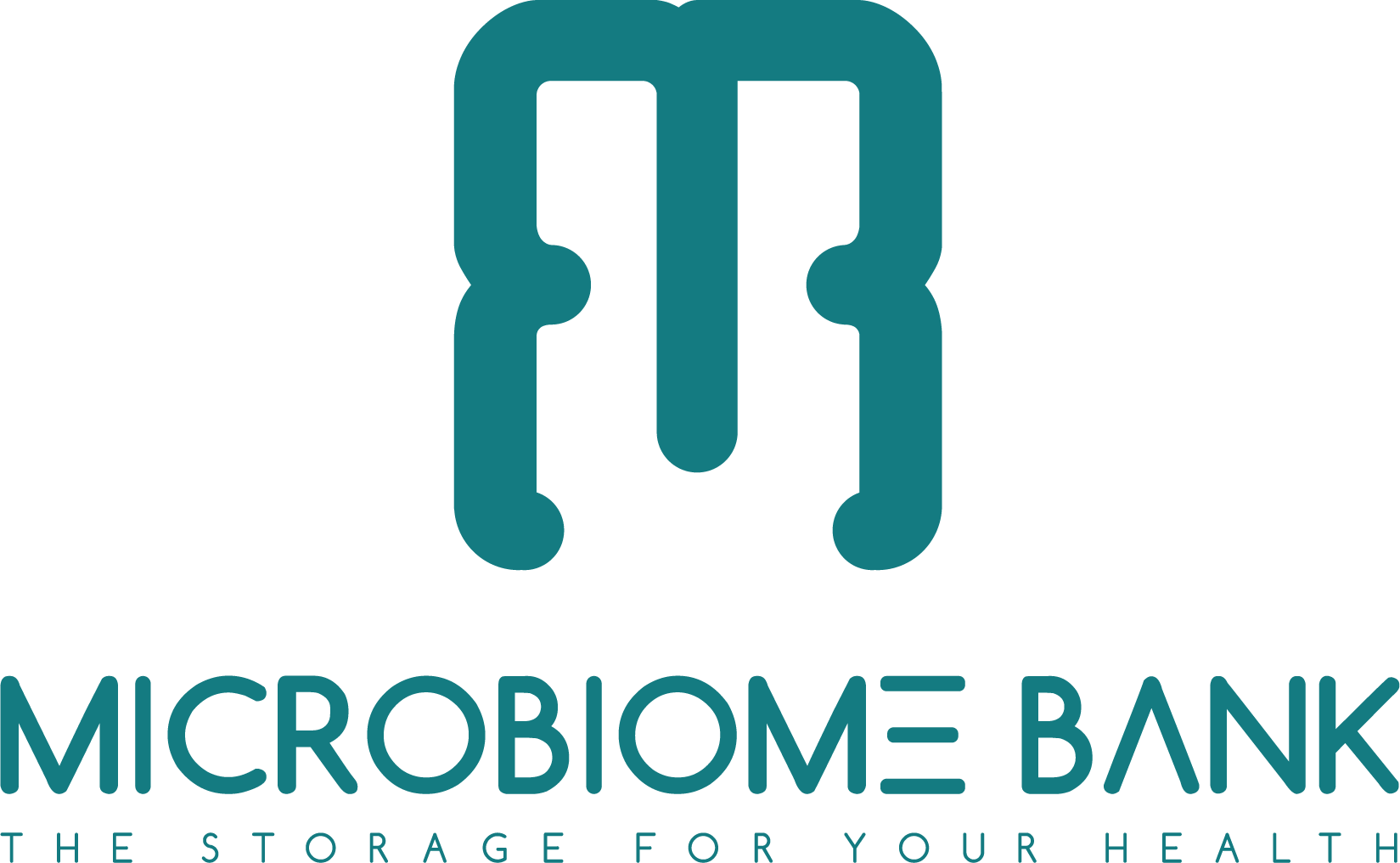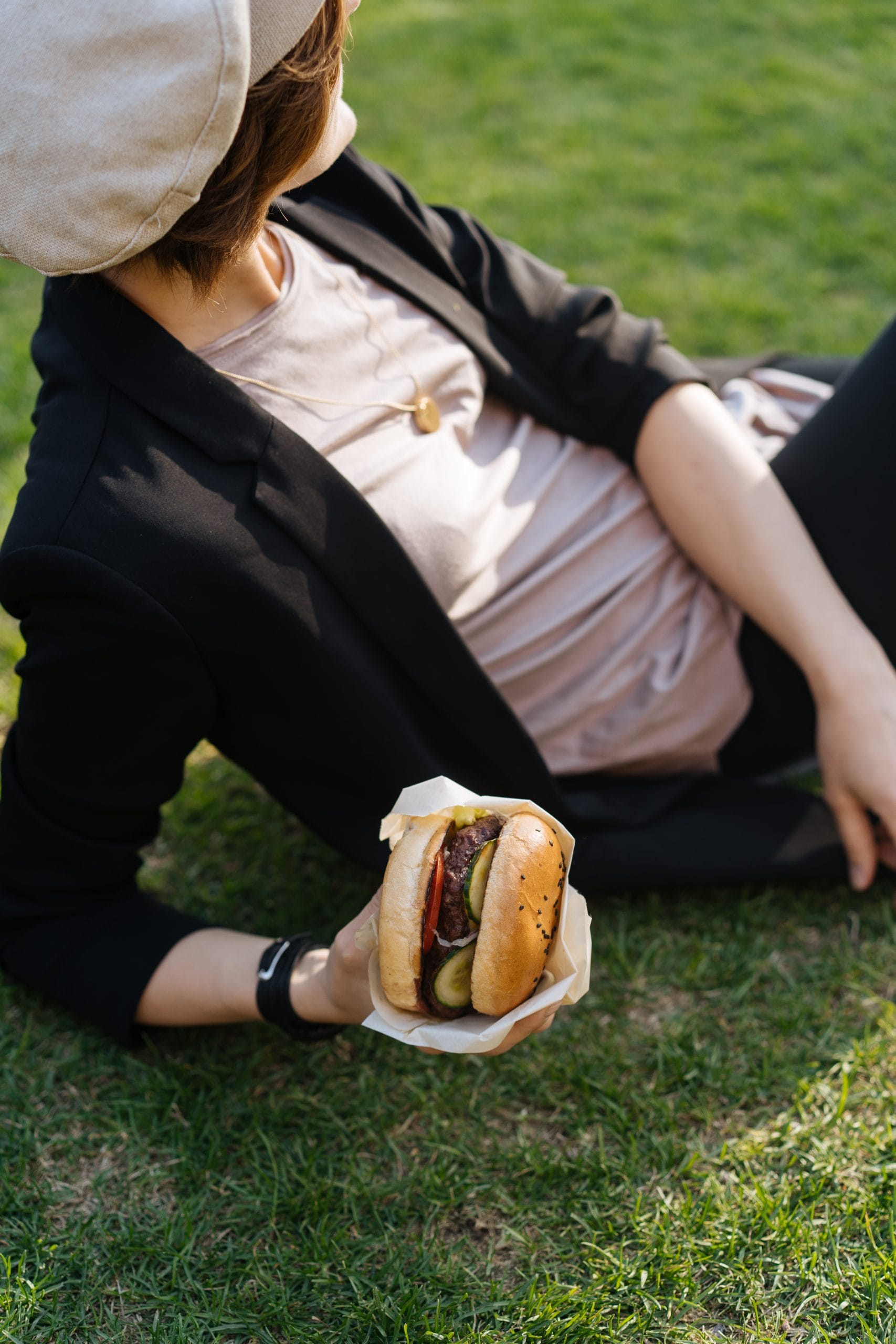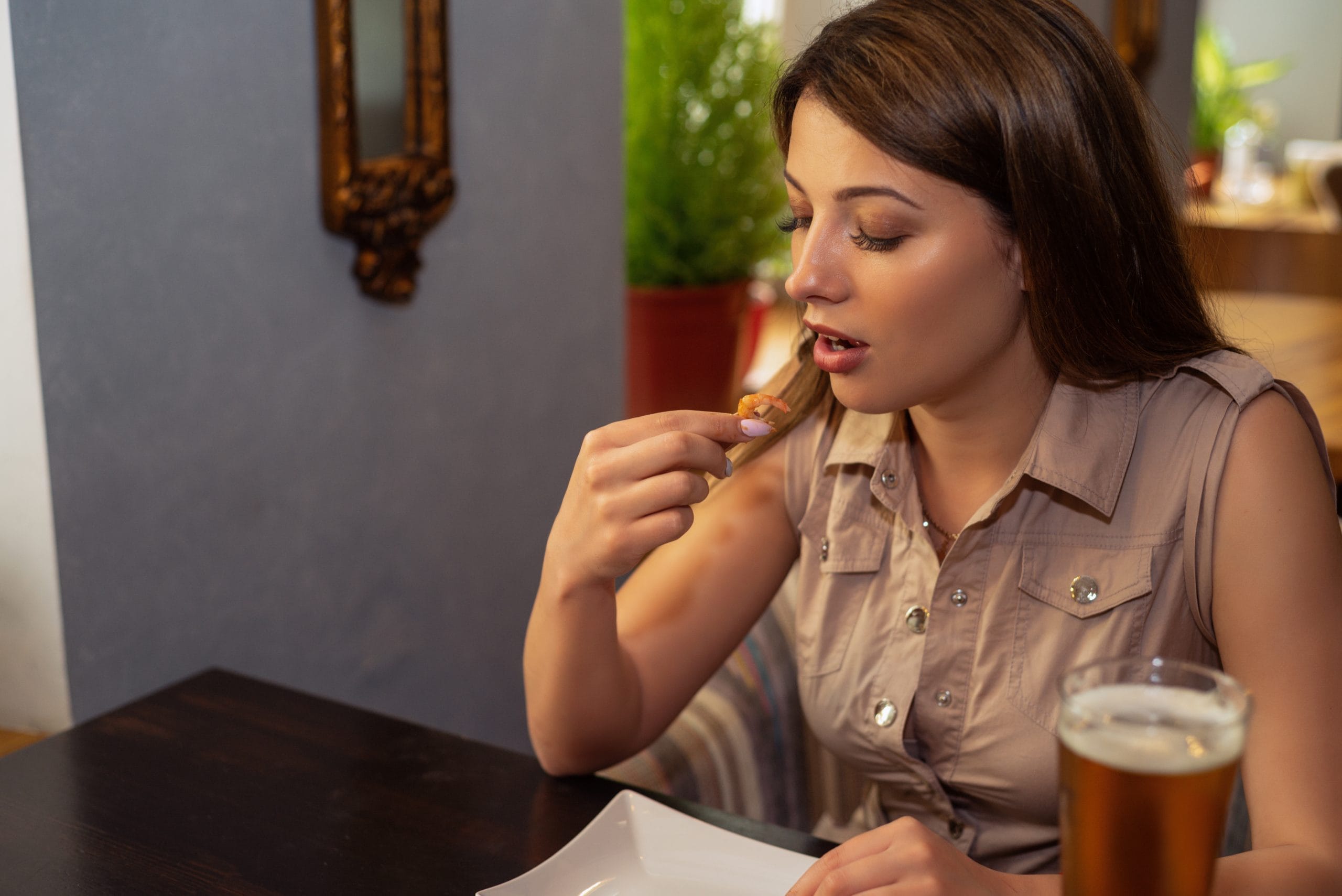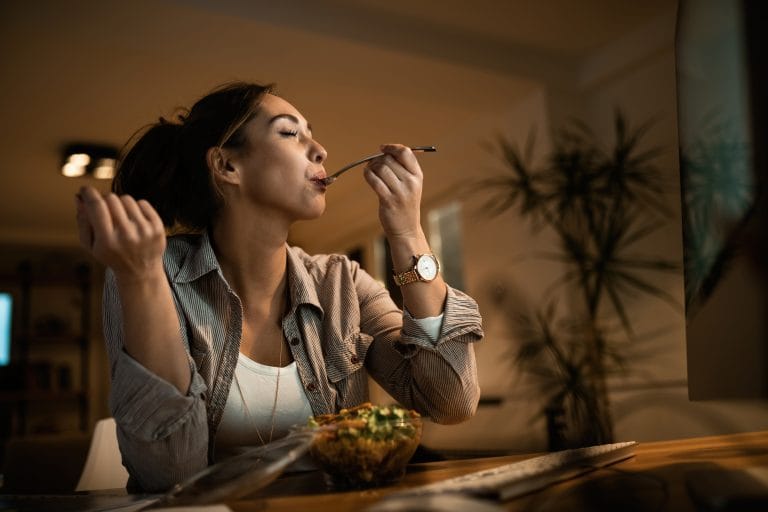Maintain an appropriate
Posture During Meals
The way you sit while eating can significantly influence digestion, nutrient absorption, and microbial balance.
Proper posture during meals – sitting upright with a neutral spine and relaxed abdominal muscles – aids in optimal digestive function. Slouched or compressed positions can hinder gastric emptying, promote acid reflux, and reduce diaphragmatic breathing, negatively impacting the mechanical process of digestion. Efficient digestion supports the delivery of properly broken-down nutrients to the lower gastrointestinal tract, where they serve as substrates for gut microbes.
Poor eating posture can lead to bloating, indigestion, and stagnation of chyme in the upper GI tract, altering the fermentation processes downstream. This can shift microbial fermentation patterns, promoting gas-producing bacteria and reducing butyrate-producing species. For individuals undergoing microbiota restoration (e.g., FMT patients), maintaining a proper eating posture ensures that the digestive process complements the delicate microbial rebalance rather than disrupting it.
Post-FMT patients, or individuals with IBS, GERD, or functional bloating, are particularly sensitive to postural effects on digestion. Ensuring proper body alignment during meals can enhance microbiota-modulating interventions by reducing mechanical barriers to digestion and fermentation dynamics.
